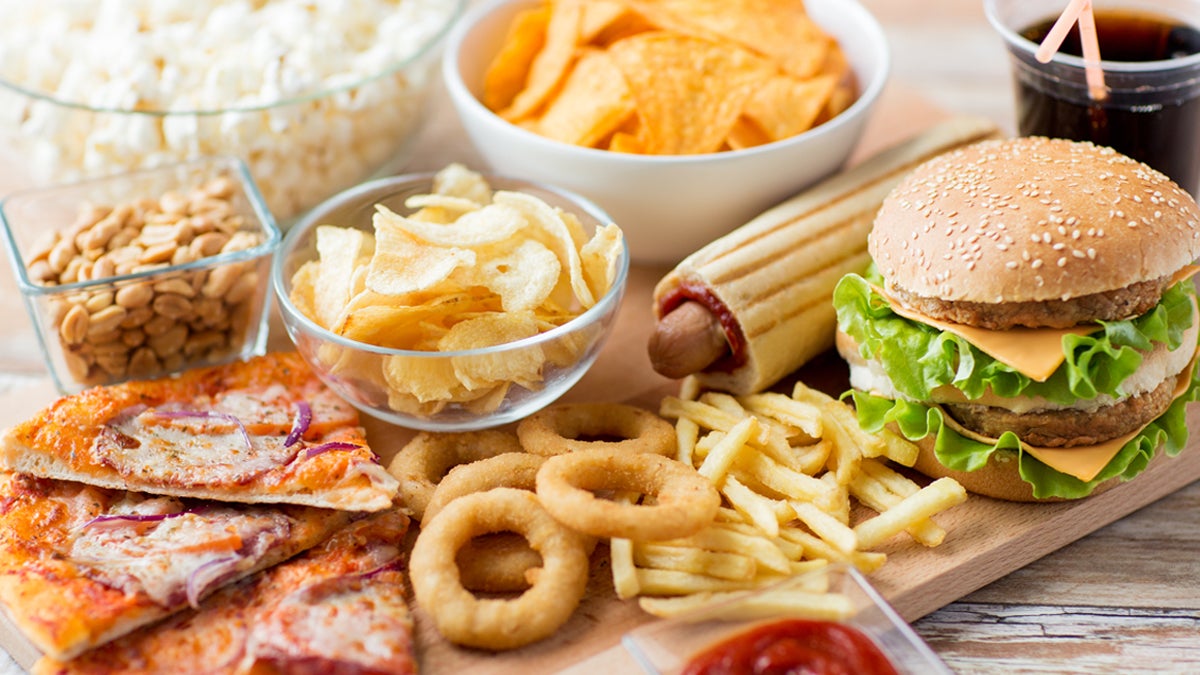Temple scientists explore diabetes’ early roots with 6,000 calorie-a-day diet

Fast food and unhealthy eating concept. (ShutterStock)
In an experiment reminiscent of the documentary “Super Size Me,” six brave volunteers stayed bed-bound for a week at Temple University hospital, gobbling up 6,000 calories a day.
The participants — all healthy middle-aged men — gorged on cafeteria food so researchers could better understand the very first stages of obesity-related diabetes.
Unlike the 2004 film, the menu wasn’t limited to fast food, and it wasn’t biased in favor of fat or carbohydrates. Nevertheless, after just a few days of eating more than two times the recommended number of calories, the men began to develop insulin resistance, a precursor to diabetes.
“I was very surprised how fast it happened,” said Temple endocrinologist Guenther Boden, lead author of the study.
By the end, the volunteers had packed on nearly eight pounds of extra weight — or more than a pound a day, all of it fat.
The scientists also tested a few hypotheses about what goes wrong in the body on its path toward diabetes. Excessive consumption didn’t immediately change levels of fatty acids or inflammatory proteins, two previously suggested culprits. But the team did find a close correlation between insulin resistance and oxidative stress, which occurs when there’s a surplus of reactive oxygen molecules.
“That means that there is enough stuff that goes around and oxidizes proteins and oxidizes DNA and does all kind of bad things,” said Boden.
In particular, the researchers think insulin resistance might be directly related to oxidative damage of a protein that controls the movement of glucose into cells, although Boden said that still has not been shown.
“If the transporter is dysfunctional, you don’t transport glucose, and you have insulin resistance,” he said. “Even if you have enough insulin, it can’t work well.”
The results were published in the journal Science Translational Medicine.
Study co-author Salim Merali said the long-term goal was to find drugs that prevent oxidative stress, thereby staving off insulin resistance and, ultimately, diabetes. One possible natural intervention is exercise — something Merali said they would be testing soon in another version of the 6,000-calorie experiment.
Recruitment, however, is likely to be a challenge. No women, for instance, volunteered for this first experiment.
“We wanted women, but we couldn’t get them,” said Boden. “As soon as they heard that they’re going to gain weight on that study, that was the end of the conversation.”
WHYY is your source for fact-based, in-depth journalism and information. As a nonprofit organization, we rely on financial support from readers like you. Please give today.

